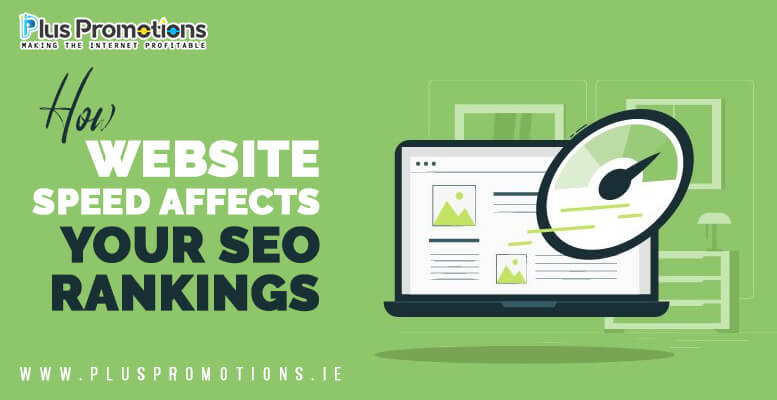0212061864 [Phone] | +353 (87) 419 5190 [Mobile]
0212061864 [Phone] | +353 (87) 419 5190 [Mobile]

Google noticed speed as a ranking factor since 2010, but it is not until recently that the Page Experience Update in June 2021 featured Website Speed as an official ranking factor, living up to the broad algorithm of Core Web Vitals.
Indeed a slow loading website would negatively affect your Search Ranking prowess, but exactly how weighty is the impact? Get insight from Plus Promotions - Web and SEO Experts.
Even though many people confuse it as the same thing, "Page Speed" is quite different from "Site Speed."
The website speed is a sample of all the page views, while the page speed refers to the detailed picture, and the time it takes for a product page or blog to load. It is by focusing on particular on-page variables that the overall site’s performance is based on that data.
There are two further variances in page speed:
● Page Load Time - the amount of time it takes for a web page's content to fully show.
● Time to First Byte - the time it takes the browser to get the first byte of data from the website.
On average, the ideal web page loading time is expected to be 3seconds. However, with streamlined Website Speed Optimisation tactics, many sites have maintained a 2second loading time, which has spurred on competition.
It is self-evident that visitors who arrive at your website via one of the consumer engagement touchpoints, that you have so artfully arranged, are most likely interested in purchasing.
However, if your web page takes more than 5 seconds to fully load, the visitor will most likely abandon your site and move on, turning down your conversion!
But that is not the only SEO setback of slowed down website speed! It works more like a ripple. The falling of your search rank is a bigger problem than losing one sale.
In 2010, the search team revealed that speed will be a ranking signal for desktop searches, and that page performance would be a ranking component for mobile searches starting from July 2018.
The Google Search and the Google Ads team is improving at a rapid pace and they are taking website speed more seriously than ever. And it directly concerns the efficiency of the UX. Also, User Experience is everything!
A bunch of user-centric performance metrics and tools were launched by Google, including the Lighthouse and PageSpeed Insights between 2020-2021. Such tools are designed to magnify “Field Data'' about the UX performance with details like First Input Delay, First Contentful Paint etc.
But the problem with these metrics is that they are not always accurate, but they are quite actionable. So if you are not paying attention to fixing the speed issues, the authority and performance of your site might get misinterpreted at various stages and ultimately cause your website to lose a rank.
The heart of a website is its User Experience. And today, there is a core need for aesthetically catchy and functionally crisp UX Design. Now, design elements like HD images, videos, animation and complex coding can make your website more exclusive, but they also put their weight on the website loading speed. Some other key factors that affect the site speed include:
So, while you need the “wow factor” for customer engagement, you also need your site to be swift with the process of navigation, browsing, actions, and finally making a purchase as smooth as possible.
Statistics clearly indicate how slow loading speed is a primary cause for customers to abandon their sessions. But the good news is businesses have ample scope to have a feature-rich website with a standard 2second loading speed. All it takes is an insightful speed optimisation strategy.
Even though poor speed cannot practically lead to Google Penalties, thanks to the several new speed initiatives, it cannot go unnoticed. Take into consideration, the following tactics to improve the speed of each webpage.
If you are still using the cheap default hosting plan you got with your domain, it is time for an upgrade to a faster and more efficient plan.
When the browser makes an HTTP request, it asks for files to be downloaded. All of the files required to load the website are returned by the website's server. By crunching the files you can make the process faster.
Too many images can slow down your website, but that doesn’t mean you should limit the use. Especially for eCommerce businesses the more the product photos the better. Image Optimisation Solutions also include formatting your images right, implementing a CDN Network, and giving more attention to details like thumbnails and how you use visual effects.
Synchronous scripts load one by one while multiple asynchronous scripts can load simultaneously, making the process faster. And since render-blocking JavaScript and CSS files in the queue of scripts can lag webpages, removing them is a good trick.
Are you facing an SEO Setback due to the lagging speed of your website? You know you can always get in touch with us at Plus Promotions to take a closer look at your website and have a methodical, actionable and cost-effective solution for website speed optimisation.